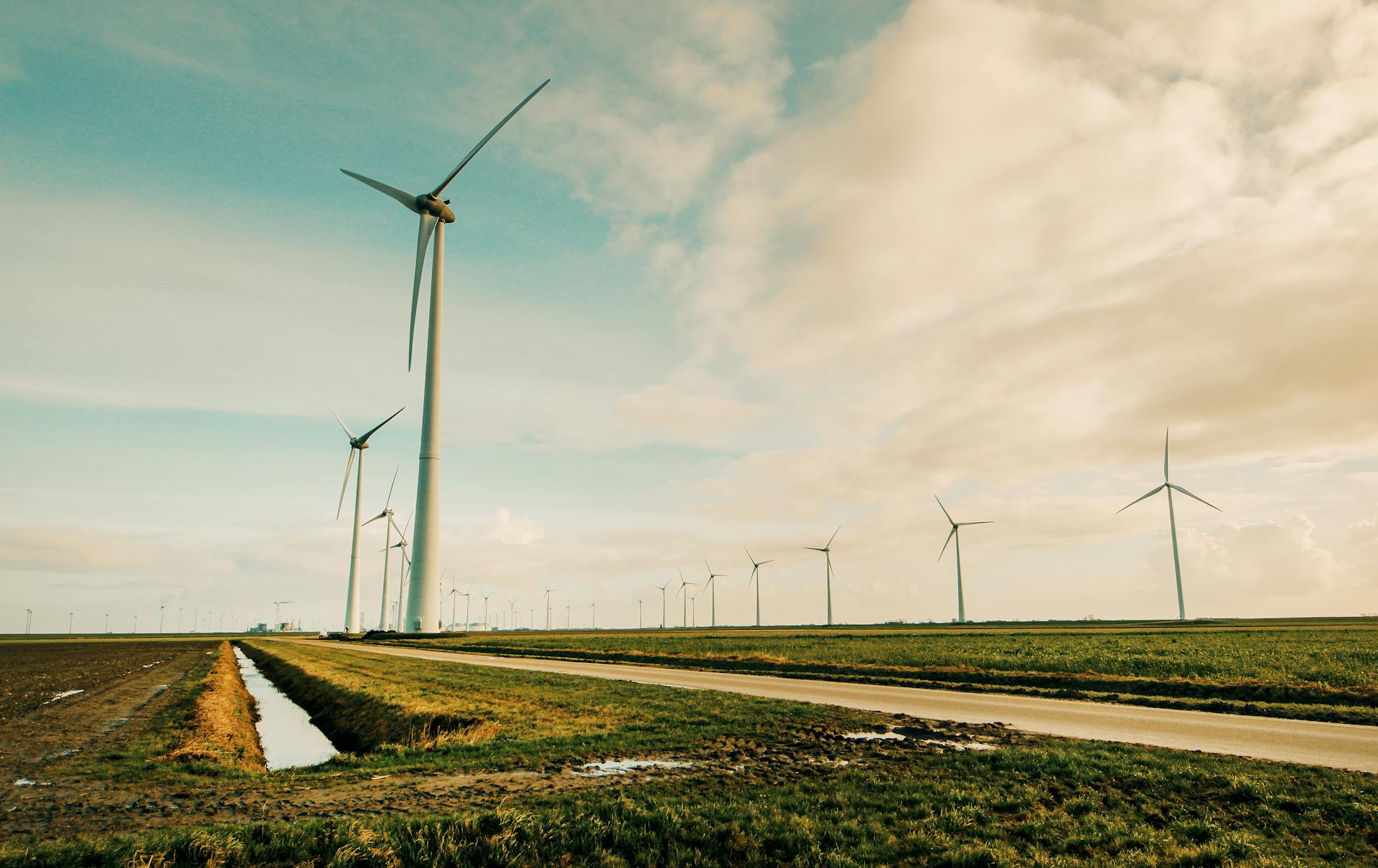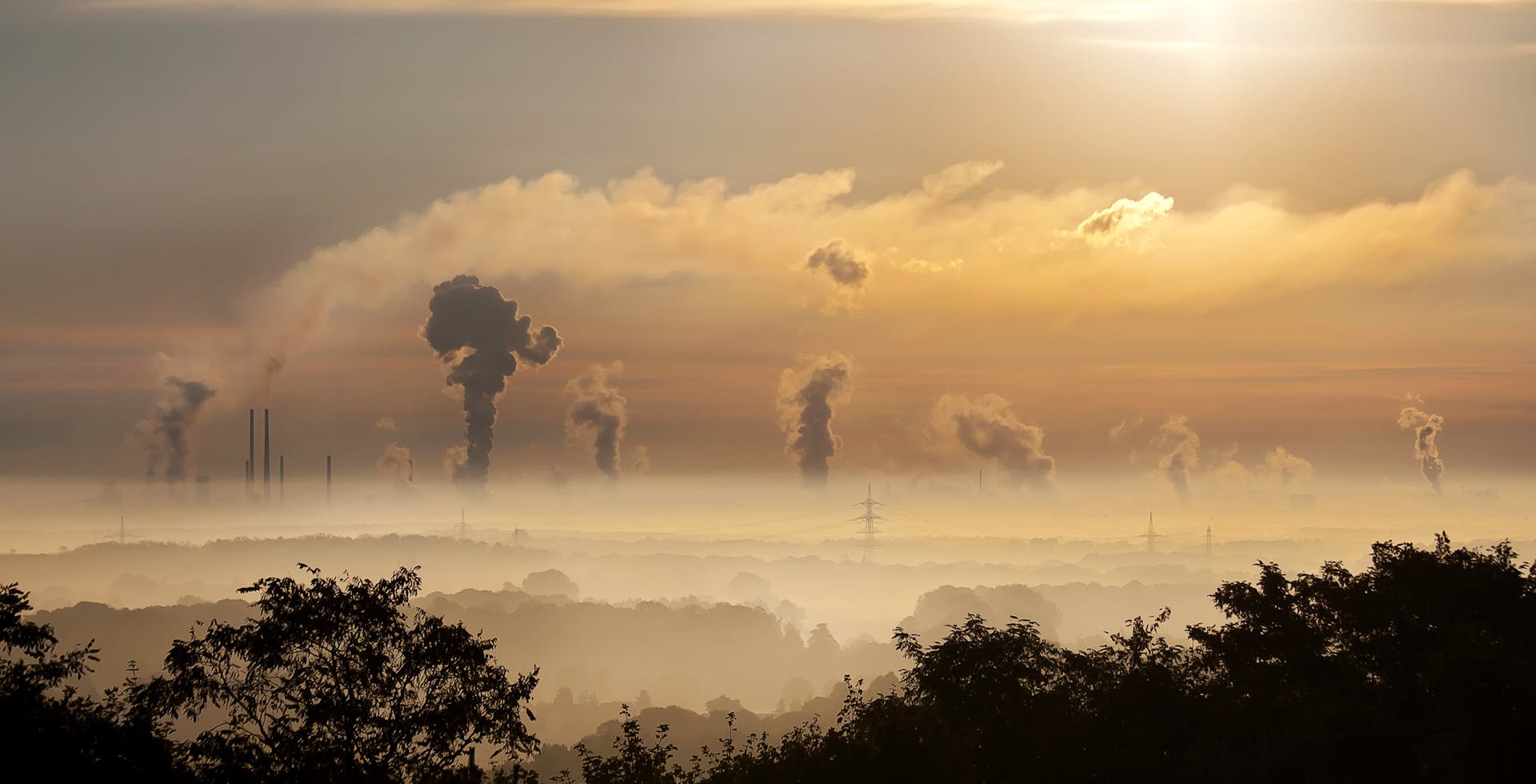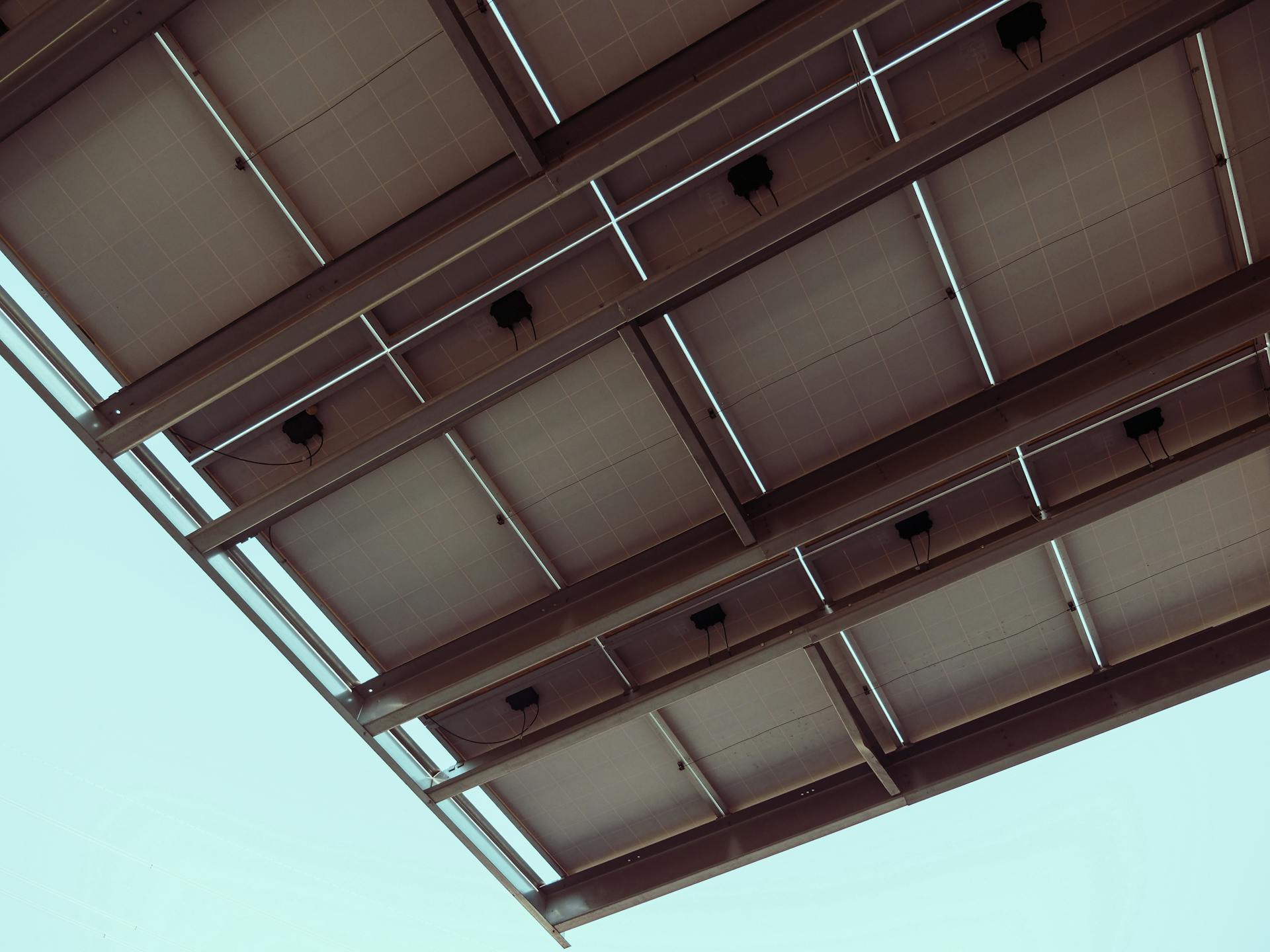
Carbon crediting is a way for countries and companies to offset their greenhouse gas emissions by supporting projects that reduce emissions elsewhere. These projects can be found all over the world.
One way carbon crediting works is through the issuance of carbon credits. A carbon credit represents one ton of CO2 that has been reduced or avoided through a project. For example, a project that reduces deforestation in the Amazon rainforest might earn carbon credits for every ton of CO2 that would have been released if the forest had been cut down.
Carbon credits can be traded on the open market, allowing countries and companies to buy and sell them to meet their emissions targets.
Consider reading: How to Trade Carbon Credits
What is Carbon Credit?
A carbon credit is a representation of an action that addresses carbon dioxide pollution. It's a certificate that represents the avoidance or removal of carbon dioxide from the atmosphere.
For every one credit, you can release into the atmosphere one metric ton of CO2 or an equivalent amount of another greenhouse gas. Companies can produce carbon removal credits through efforts like reforestation, energy conservation, and renewable energy.
Companies can buy carbon credits from other companies that haven't used all of their credits. This helps transfer capital to fund climate action and promote sustainable practices.
Check this out: Carbon Credits
How Does it Work?
Carbon credits can operate under a cap-and-trade system or as offsets. In a cap-and-trade system, governments or regulatory bodies set a cap on the total amount of greenhouse gases that can be emitted by all covered entities.
The yearly credit allocation is dictated by the country's or state's emission targets. Many countries, including the USA, Canada, Mexico, China, New Zealand, the UK, and the EU, have already adopted the cap-and-trade model.
Companies trade emission permits according to carbon credit market demand. A regulator establishes a cap, and companies trade emission permits to stay within the limit.
As the cap is steadily lowered over time, it becomes increasingly challenging for companies to maintain their operations under the cap. At the same time, a company may earn money by selling excess credits to other companies.
Businesses have a motive to cut down their environmental footprint to avoid buying more credits or to sell their surplus credits. Companies facilitating the reduction of CO2 emissions under a cap-and-trade system would have an easier time meeting emission targets.
The sale of carbon credits from ecosystem restoration can encourage and help fund landscape and water quality enhancements, as seen in the case of the CSU project, Sustainable Water Quality Solutions.
Who Buys and Sells Carbon Credits?
Carbon credits are bought and sold by a variety of entities, including companies, governments, and individuals. These buyers are motivated by the desire to reduce their carbon footprint and comply with emissions regulations.
Companies like Microsoft and Walmart purchase carbon credits to offset their greenhouse gas emissions. Governments like Norway and Sweden also buy carbon credits to meet their climate goals.
Individuals, such as philanthropists and eco-conscious consumers, are increasingly buying carbon credits to support projects that reduce emissions.
Who Buys Them?
Companies, governments, and individuals buy carbon credits to offset their carbon emissions. These entities are the primary buyers of carbon credits.
The buyers of carbon credits are diverse, with most being filtered through brokerage firms like commodities. This is how carbon credits are typically traded.
Companies buy carbon credits to meet corporate sustainability and net-zero commitments. This is a key reason why they purchase carbon credits.
Individuals buy carbon credits to offset the emissions from travel. This is just one way they use carbon credits.
Suggestion: Carbon Offset Credit Market Crash
Governments use carbon credits as part of complex climate action plans. This is a strategic move to address climate change.
Businesses and governments also buy carbon credits to comply with legal caps on greenhouse gas emissions. This is a requirement for many organizations.
Purchasing carbon credits is also a way for companies to demonstrate environmental commitment and leadership in sustainability. Some publicly traded companies have made public statements about environmental goals.
Where to Buy
If you're looking to buy carbon credits, you have two main options: compliance markets and voluntary markets. Compliance markets are regulated by governments and are geared towards large energy-hungry emitters.
The European Union's Emissions Trading System (ETS) is a notable example of a compliance market, where businesses can buy and sell carbon credits. It's a well-established system with clear rules and regulations.
Voluntary markets, on the other hand, are free from government regulations and allow anyone to participate – individuals, businesses, or non-profits. These players may buy credits to offset their carbon footprint or meet corporate sustainability targets.
Here are the two main types of markets where you can buy carbon credits:
Where Do People Shop?
People can buy carbon credits from a variety of sources.
Specialized carbon offset providers or brokers sell retail carbon credits.
You can also purchase carbon credits directly from projects generating them.
Carbon trading platforms and exchanges are another option for buying carbon credits.
Some nonprofit organizations facilitate carbon financing for conservation or renewable energy projects, allowing you to buy carbon credits from them.
It's essential to ensure the carbon credits you buy are certified by reputable standards, such as the Verified Carbon Standard or the Gold Standard.
Questions Before Selling
Before selling carbon credits, it's essential to consider a few key questions.
What are the buyer's specific needs and requirements? For instance, the European Union's Emissions Trading System (EU ETS) requires a certain level of carbon credits to meet their reduction targets.
Are the credits compliant with the relevant standards and regulations? The Clean Development Mechanism (CDM) and Verified Emissions Reductions (VER) are two such standards that ensure credits meet environmental integrity.
Will the buyer accept credits from a specific project type or region? For example, some buyers may prefer credits from renewable energy projects in developing countries, such as wind farms in India.
Are the credits verified and registered with a recognized registry, such as the International Transaction Log (ITL)? This ensures the credits are legitimate and can be transferred securely.
Can the seller provide transparent and auditable records of the credits' origin and history? This is crucial for maintaining trust and credibility in the carbon credit market.
Why Do People Buy Carbon Credits?
People buy carbon credits for various reasons. They're often used to counteract industrial pollution, and businesses use them to meet corporate sustainability and net-zero commitments.
Companies and governments also purchase carbon credits to comply with legal caps on greenhouse gas emissions, or to voluntarily offset their carbon footprint as part of corporate social responsibility initiatives.
Some individuals buy carbon credits to offset the emissions from their travel, while governments use them as part of complex climate action plans.
Recommended read: Chase Bank Credit Card Credit Score
Purpose Of Credit
Carbon credits serve as a financial incentive for companies to minimize their greenhouse gas emissions and engage in greener, more sustainable operations.
Companies buy carbon credits to offset their carbon emissions, which is typically filtered through brokerage firms before being resold to third parties.
The purpose of carbon credits is to help us fight climate change by supporting programs that reduce or eliminate greenhouse gas emissions.
This market-based instrument encourages companies to adopt greener practices in industries like agriculture, providing a financial incentive to do so.
You might enjoy: Easy Approval Gas Credit Cards No Credit Check
Why Do People Buy Them?
People buy carbon credits for various reasons. Businesses use them to meet corporate sustainability and net-zero commitments, as mentioned by Gifford.
Individuals buy carbon credits to offset the emissions from travel. Governments use them as part of complex climate action plans, also stated by Gifford.
Some people buy carbon credits to comply with legal caps on greenhouse gas emissions. Others do it to voluntarily offset their carbon footprint as part of corporate social responsibility initiatives, as Quinn explained.
Purchasing carbon credits is also a way to support renewable energy, forest conservation, or emissions reduction projects. This is in line with Quinn's statement about supporting such projects.
Carbon Credit Programs and Initiatives
Carbon credit programs have been established to provide quality assurance for carbon credits, ensuring their quality is difficult for casual buyers to assess. These programs range from international or governmental regulatory bodies to independent non-governmental organizations (NGOs).
The Kyoto Protocol, an international agreement to reduce emissions of greenhouse gases, was put into force in 1997 and has 192 signatories. It's a significant milestone in the history of carbon crediting.
Carbon crediting programs perform three basic functions: developing and approving standards, reviewing crediting projects, and operating registry systems. They issue, transfer, and retire carbon credits, making it a crucial part of the carbon crediting process.
Here's a table summarizing some major carbon crediting programs:
The Regional Greenhouse Gas Initiative (RGGI) is a program where ten states in the Northeast are working together to combat emissions. The Inflation Reduction Act, enacted in August 2022, is another significant piece of legislation aimed at lowering CO2 emissions in the US.
Programs
Carbon credit programs are a crucial part of the carbon credit system, ensuring that credits are high-quality and meet certain standards. They develop and approve standards for carbon credits, review crediting projects, and operate registry systems that issue, transfer, and retire credits.
There are two types of carbon crediting programs: compliance programs run by governmental bodies and independent programs run by non-governmental organizations (NGOs). Compliance programs, such as Article 6.4 of the Paris Agreement, are primarily for regulatory purposes, while independent programs, like The Gold Standard, serve voluntary buyers.
Each carbon crediting program issues its own labeled brand of credit, such as Article 6.4 Emission Reduction Units (A6.4ERs) or Verified Emission Reduction (VER). These programs have different geographic coverages, ranging from global to regional.
Here's a breakdown of some major carbon crediting programs:
Kyoto Protocol
The Kyoto Protocol was put into force in 1997 as an international agreement to reduce emissions of greenhouse gases through the issuance of carbon credits.
This agreement aimed to cut emissions in line with designated targets, putting the UN Framework Convention on Climate Change into action.
As of now, the protocol counts 192 signatories.
Paris Agreement
The Paris Agreement is a significant step towards reducing greenhouse gas emissions. In 2015, 196 parties signed this agreement, which establishes emission norms and encourages emissions trading.
This agreement aims to cut down GHG emissions and restrict the increase in global temperature to less than 2°C (3.6°F) above pre-industrial era levels by the end of the 21st century.
Glasgow Climate Pact
The Glasgow Climate Pact is a significant agreement reached at the UN Climate Change Conference in Glasgow in November 2021. It brought together over a hundred global leaders and 40 thousand participants.
The pact's goal is to stimulate nations to fund projects that save forests and promote green energy infrastructure to fight global warming. This is a crucial step towards reducing emissions and meeting the Paris Agreement's target of restricting the increase in global temperature to less than 2°C above pre-industrial era levels.
The pact will enable signatory countries to make significant strides toward their emission targets by utilizing offset credits. This is a positive development, as it provides a clear path forward for countries to reduce their emissions and contribute to a more sustainable future.
Verification of carbon credits has also become more accurate, thanks to new rules ratified at the Climate Change Conference in Glasgow. This increased accuracy will help ensure that carbon credits are used effectively to reduce emissions and promote sustainable practices.
Recommended read: Does a Prepaid Credit Card Build Credit
USA Initiatives
The United States has a long history of carbon credit trading, with the Clean Air Act going into effect in 1990 and being the first cap-and-trade initiative in the world.
The Regional Greenhouse Gas Initiative (RGGI) is a program where ten states in the Northeast are working together to combat emissions.
In 2013, California launched its own carbon credit program, making it one of the biggest in the world. This program aims to reduce emissions by offering credits to large-scale electric generating facilities, factories, and fuel distributors.
The Inflation Reduction Act, enacted in August 2022, is a landmark piece of legislation aimed at lowering CO2 emissions in the US.
EOSDA Analyzes Land Use for Legado Green
EOSDA helped Legado Green assess and visualize land use changes across 13M acres in Colombia.
Their expertise in agriculture technologies enabled them to provide accurate insights through relief-sensitive grids and lightweight 3D visualizations.
Carbon credit validation is a complex procedure that requires thorough data collection and analysis of numerous factors.
Types of Carbon Credit Projects
Carbon credit projects can be broadly categorized into several types, each with its own unique approach to reducing greenhouse gas emissions.
Renewable energy projects are a common type of carbon credit project, often involving the installation of solar panels or wind turbines to generate electricity.
These projects can be found in both developed and developing countries, and can have a significant impact on reducing reliance on fossil fuels.
Reforestation and afforestation projects involve the planting of trees in areas where they have been previously cleared, helping to sequester carbon dioxide from the atmosphere.
Sustainable agriculture projects focus on reducing emissions from farming practices, such as through the use of crop rotation and organic farming methods.
Waste reduction and recycling projects aim to minimize waste and reduce emissions from landfills, often through the implementation of recycling programs and waste-to-energy technologies.
Offset Achievement Ratio by Project Type
The offset achievement ratio (OAR) is a crucial metric for evaluating the effectiveness of carbon credit projects. It measures the actual emission reductions achieved by a project compared to the number of credits issued.

In the case of wind power projects, a study found that no statistically significant emission reductions were documented in the studies. This suggests that wind power projects may not be delivering the expected emission reductions.
Cookstoves, on the other hand, achieved an OAR of 10.8%, meaning that they delivered a small fraction of the expected emission reductions.
Here's a breakdown of the OAR for different project types:
Overall, the OAR varies widely across different project types, highlighting the need for careful evaluation and monitoring of carbon credit projects.
Improved Forest Management
Improved Forest Management projects, also known as IFM, are a type of carbon credit project that aim to increase carbon in forests and reduce carbon loss.
These projects involve forest management practices such as extending harvest rotations, reduced impact logging, liberation thinning, and converting logged forests into conservation forests. Most IFM projects mainly generate credits from avoiding forest degradation.
Over three-quarters of carbon credits from IFM projects were issued under the California Air Resources Board’s US Forest Projects Protocol. This protocol has been the focus of studies that investigate the quality of IFM carbon credits.
Two studies, one analyzing 90 IFM projects and the other 16 projects in California, found no statistically significant evidence of additionality, meaning that these projects did not lead to increased carbon accumulation or reduced harvesting compared to similar control areas.
The study on 90 IFM projects found that lands enrolled into carbon crediting projects already had lower rates of harvest over decades before the start of the project, making it easier for them to generate credits against an average baseline without needing to change how the forests were being managed.
The study on 16 ARB IFM projects in California found no evidence of increased carbon accumulation after project initiation compared to similar control areas, and no evidence of reduced harvesting compared to past harvesting rates in the project areas.
Chemical Processes
In chemical processes, carbon credit projects have shown varying levels of effectiveness. HFC-23 and SF6 abatement projects have a high likelihood of additionality, meaning they're likely to happen even without financial or regulatory incentives.

These projects often have a high potential for perverse incentives, where the high carbon credit revenues lead to an increase in waste gas generation beyond normal levels. This can result in lower actual emission reductions.
The CDM Executive Board revised the methodology for HFC-23 waste gas generation, but most plants never applied the new methodology as they stopped issuing credits due to a lack of demand. The two CDM projects that lowered their HFC-23 waste gas generation in periods without carbon credits suggest that monitoring and verification are crucial for accurate emission reductions.
SF6 projects under JI showed a significant increase in waste gas generation when plant operators could generate more credits by producing more waste gas. This led to lower OAR values for the SF6 projects compared to the HFC-23 projects.
Readers also liked: Credit Cards for Fair Credit with High Limits
Soil Organic Modeling
Soil Organic Carbon Modeling is a crucial aspect of carbon credit projects. It helps to accurately calculate the carbon storage in your soil using advanced algorithms that analyze soil testing data and satellite technology.
EOSDA's Carbon solution uses up to 140 built-in predictors to adjust to different geographical and climatic situations. This ensures precise data on soil carbon sequestration in your fields.
The SOC model can collect data with maximum effectiveness and reduce costs for soil sampling in the long run. You can schedule an in-depth consultation with EOSDA's sales team to learn more about the features and capabilities of their Carbon solution.
Carbon project developers can also leverage EOSDA's crop monitoring system, which uses historical and current agricultural data to monitor the implementation of sustainable agricultural practices on farmlands.
Carbon Credit Calculation and Verification
Carbon credit calculation and verification is a meticulous process that involves several key steps. Verifiers examine carbon credit data collected through rigorous monitoring to make sure it's accurate and dependable.
To determine the project's actual decrease in emissions, verifiers use recognized methodology and consider additionality, which means they look at whether the project was necessary for the actual decrease in GHG emissions or if the reduction would have occurred anyway.
Establishing a GHG emission baseline is a crucial step in measuring emission reductions. The baseline is the amount of emissions that would be expected if the project were not implemented, and verifiers evaluate and set a reasonable baseline for this purpose.
EOSDA's technologies can greatly facilitate the carbon credit verification process for carbon project developers, making it easier to collect and analyze data.
Credit Calculation
Carbon credit calculation is a crucial step in the carbon credit process. It involves comparing greenhouse gas emissions from a project scenario to those from a baseline scenario, where the project was not implemented.
The project scenario describes the situation after the project is completed, while the baseline scenario describes the situation without the project. By subtracting project-scenario emissions from baseline emission values, carbon credits are issued for CO2 emissions avoided or removed thanks to the project.
Accuracy in carbon credit calculation is essential to ensure that credits are issued fairly and accurately. Verification methods have made significant advancements, thanks to new rules ratified at the Climate Change Conference in Glasgow.
Carbon credit verification is an ongoing process that involves periodic checks on active projects to ensure ongoing compliance and lasting benefits of lower emissions. Accredited verifiers use various methods to verify the accuracy of carbon credit data.
For a project to be eligible for carbon credits, verifiers examine data collected through rigorous monitoring to ensure it's accurate and dependable. They then determine the project's actual decrease in emissions using recognized methodology and consider additionality.
All the verifier's findings and feedback are detailed in a comprehensive verification report, which is forwarded to the relevant carbon credit body to prove eligibility. This report is a critical document that ensures the credibility of the carbon credit process.
Readers also liked: How Long Can Credit Cards Stay on Your Credit Report
Establishing GHG Baseline
Establishing a GHG emission baseline is a crucial step in measuring the effectiveness of a project in reducing emissions. The baseline is the amount of emissions that would be expected if the project were not implemented. Verifiers evaluate and set a reasonable baseline for the purpose of measuring emission reductions.
A baseline is like a benchmark that helps us understand what the emissions would be without the project. This helps us accurately measure the actual reductions achieved by the project.
To establish a baseline, verifiers consider various factors, including the project's location, activities, and historical emissions data. This information helps them determine a realistic and reliable baseline.
You might like: Us Bank Software Credit Tracker Business Credit Card
Breakeven Prices
Breakeven prices are a crucial factor in carbon credit calculations. They represent the price of carbon where adopting a carbon sequestration practice becomes economically viable for the farmer.
The breakeven price is in 2010 dollars per metric ton of carbon dioxide equivalent and it can vary depending on the agricultural practice used. For example, the price of carbon would need to be $32 per metric ton of carbon dioxide equivalent for the farmer to breakeven switching from conventional tillage to no-till on soybeans.
Actual breakeven prices will vary from farm-to-farm depending on costs, soil types, and other factors. The breakeven prices in Table 1 serve as a general estimate and are based on the average annual soil carbon sequestration, adoption cost, yield changes, and average crop prices.
You might enjoy: What Is the Average Credit Limit on Credit Cards

The breakeven price can change over time due to changes in costs and prices. The prices and costs mentioned in the article are from 2013, so they likely have changed since then.
Farms can sequester carbon through various practices, not just those listed in the table. The breakeven price is an important consideration for farmers and companies looking to engage in carbon sequestration practices.
Benefits and Drawbacks of Carbon Credits
Carbon credits can encourage businesses to lower their emissions, both immediately and in the long run, by fostering investment in R&D for innovative emission reduction strategies.
Buying carbon credits from companies that reduce emissions more economically can be an option for companies struggling to directly reduce their emissions.
Carbon credit trading can also help bring industries and countries together to combat climate change.
However, some companies may use credit purchases as a way to continue emitting greenhouse gases, rather than investing in greener practices.
Core Reasons for Low Offset Achievement Ratios

The reality of carbon credits is that they often don't live up to their claimed potential. Our research shows that the total achieved emission reductions of carbon crediting projects are substantially lower than claimed.
One of the main reasons for this is the offset achievement gap across different project types. This gap is a significant issue that needs to be addressed.
The offset achievement gap is a result of various factors, including the way projects are designed and implemented. Our assessment indicates that the potential sources behind the offset achievement gap are worth exploring.
For instance, the way projects are monitored and verified can significantly impact the accuracy of emission reduction claims. This is a critical aspect that needs attention to ensure the integrity of carbon credits.
Advantages and Disadvantages
Carbon credits have the potential to encourage businesses to lower their emissions, both immediately and in the long run, which can boost sustainability on a global scale.

This is because carbon credit trading gives companies the option to buy credits from companies that reduce emissions more economically, making it easier for them to adopt greener practices.
Carbon credit development and trading can also help bring industries and countries together to combat climate change.
One of the main problems with carbon credits is that they allow some companies to continue emitting greenhouse gases, as they can simply buy all the credits they need instead of investing in greener practices.
This can be particularly true for more lucrative companies that don't see the need to reduce their emissions.
Future of Carbon Credits
The future of carbon credits is looking bright, with governments and businesses eager to reduce emissions and monetize them through carbon credits. Many governments and businesses are now keen to take action on emission reductions and monetize them by using carbon credits.
The voluntary market had a rough year in 2023 due to negative publicity and a harsh macroeconomic climate. New carbon credit regulations from bodies like the US Commodities Futures Trading Commission are being introduced to increase customers' confidence in the instrument.

By 2030, businesses might buy up to 1.4 billion credits a year, according to BloombergNEF research. This growing market calls for more efficient ways to acquire and verify carbon credits.
Companies are now seeking credibility and the chance to make a difference, not just credits. We are fully committed to supporting businesses on this journey toward sustainability.
Conclusion
As you consider selling carbon credits, it's essential to carefully review any contract before signing. Farmers should understand the specific terms and conditions, including data ownership structure and penalties.
The breakeven price for many carbon sequestration practices is higher than the current market price. To cover costs, carbon prices need to reach at least $40–80 per metric ton of carbon dioxide by 2020.
Uncertainty about long-term costs and returns for carbon sequestration practices is a major concern. Many carbon programs are still in the pilot process, and discussions about a government carbon bank are ongoing.
Selling carbon credits is a long-term commitment that can last 10 years or more. Farmers may want to wait until the carbon marketplace becomes more developed before making a decision.
Take a look at this: How Long after Paying off Credit Cards Does Credit Improve
Frequently Asked Questions
What is the crediting period of carbon?
The crediting period for carbon emissions varies between 7 years for emissions avoidance projects and 25 years for sequestration projects. Learn more about how crediting periods are determined and how they impact carbon offset projects.
Sources
- https://warnercnr.source.colostate.edu/ask-the-experts-carbon-credits-101/
- https://offsetguide.org/understanding-carbon-offsets/carbon-offset-programs/
- https://www.nature.com/articles/s41467-024-53645-z
- https://eos.com/blog/carbon-credits/
- https://farmdocdaily.illinois.edu/2021/04/what-questions-should-farmers-ask-about-selling-carbon-credits.html
Featured Images: pexels.com


